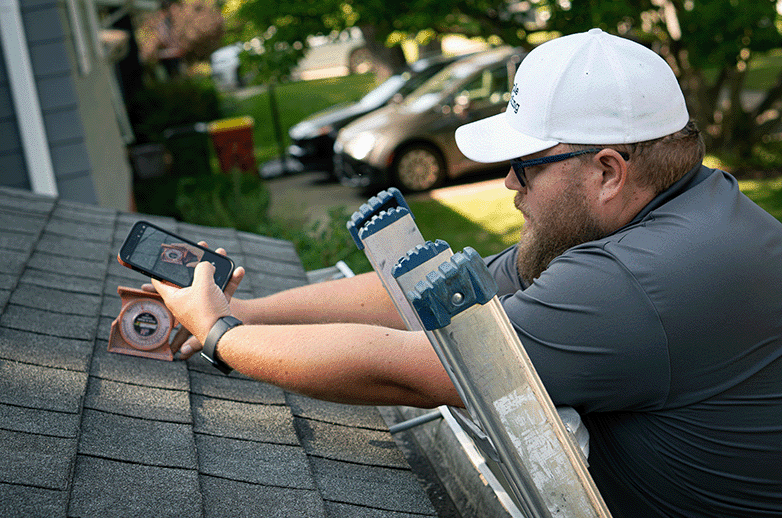If you’re wondering whether your homeowner’s insurance will cover the cost of a new roof, the answer depends mainly on the specific circumstances leading to the roof damage. Understanding what is and isn’t covered can help avoid surprises during claims.
What Does Homeowner’s Insurance Cover?
A standard homeowner’s insurance policy generally covers roof damage caused by sudden and accidental events, often called “perils.” These perils include:
- Hail or Wind Damage: High winds or hailstorms are some of the most common causes of roof damage, and they are typically covered.
- Fire and Smoke Damage: If a fire damages your roof, it’s almost always covered by insurance.
- Lightning Strikes: Lightning that damages your roof or electrical system is often covered.
- Debris Damage: Falling objects, such as tree limbs, can lead to roof damage covered by insurance.
- Snow and Ice Damage: Accumulation of snow or ice leading to structural issues may also be covered.
- Sudden Water Damage: A burst pipe or unexpected water intrusion causing roof damage is generally included.
What Homeowner’s Insurance Doesn’t Cover
Homeowner’s insurance doesn’t cover all types of roof damage. Policies have limitations, and it’s crucial to understand them to avoid unexpected costs. Some situations where roof damage might not be covered include:
- General Wear and Tear: Over time, your roof experiences normal wear and tear, which isn’t covered by insurance. Keeping up with maintenance is essential.
- Neglect or Lack of Maintenance: Damage from not addressing known issues or neglecting regular maintenance can void coverage.
- Failed DIY Repairs: Damage caused by incorrect repair attempts may also lead to denied claims.
- Animal or Pest Damage: Damage caused by birds, rodents, or insects isn’t covered.
- Flood and Earthquake Damage: These types of damage require specific add-on policies that aren’t part of a standard plan.
- Rust, Rot, or Mold: Slow-developing issues like rust, rot, and mold are considered maintenance problems rather than insurable events.
How to Get Your Insurance to Cover a New Roof
If your roof has been damaged and you think it qualifies for coverage, there are vital steps you should take to increase the likelihood of your claim being approved:
- Document the Damage: Take clear photos before making any temporary repairs. This provides proof of the condition for your insurer.
- Report Promptly: Don’t delay notifying your insurance company about roof damage. Reporting the issue as soon as possible increases your chance of a successful claim.
- Consult a Roofing Professional: Consult a professional roofer to inspect the damage before filing your claim. A detailed inspection report can help substantiate your claim.
- Understand Your Policy: It’s important to review your insurance policy to determine what is and isn’t covered. This includes determining whether local risks, like hurricanes, require additional coverage.
Partial vs. Full Coverage
It’s worth noting that insurance companies may only pay for part of a roof replacement, depending on the damage assessment. If they determine that pre-existing issues or lack of maintenance contributed to the roof’s failure, they may offer to cover only the portion directly impacted by a recent incident.
For example, if a windstorm damages part of your roof but previously unrepaired wear and tear exists, the insurance might only cover the storm-related repairs. Proper maintenance and prompt repairs are crucial to ensure more extensive coverage when needed.
When You May Need Additional Coverage
Depending on where you live, some natural disasters, such as hurricanes or floods, are not covered under standard homeowner’s policies. In areas prone to these events, additional insurance is necessary. If you live in a flood-prone area, consider adding flood insurance to ensure you’re fully protected.
Key Takeaways
- Homeowner’s insurance covers sudden and accidental roof damage caused by wind, hail, fire, or falling debris.
- Normal wear and tear, neglect, or poorly done repairs are not covered.
- When filing a claim, timely maintenance and professional inspections can make a big difference.
- Review your policy to see if additional coverage is necessary for risks specific to your area.
Understanding your insurance policy is critical when it comes to roof replacements. Be proactive in maintaining your roof, and ensure you know which damage your insurance will cover. This knowledge can save you time, frustration, and money when facing roof-related issues.
Ready to Protect Your Home? Get Professional Help Today
If you’re facing roof damage and unsure what your insurance will cover, we’re here to help. Apple Roofing offers professional inspections to assess your roof and guide you through the insurance claim process. Contact us today to schedule a free inspection, and let our experienced team ensure you get the coverage you need for a safe and secure roof.

